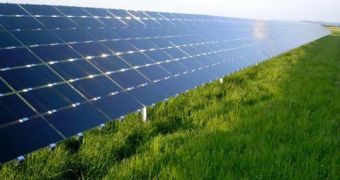For the time being, invisible sunlight eludes solar panels worldwide, as the latter only react to wavelengths of light one typically sees in a rainbow.
However, it seems that 40% of the light beams we get from the sun are made up of invisible light, which is basically – as its name thoroughly suggests – light that human eyes cannot perceive. Examples of invisible light are ultraviolet and infrared.
As one can easily guess, by finding ways to capture these ultraviolet and infrared radiations, human society could produce significantly more energy using the sun as a primary source of “raw material.”
Apparently, scientists from the Massachusetts Institute of Technology (MIT) have achieved just this: their new carbon-made solar cells are fully capable of harvesting the sunlight traditional ones, made from silicon or special plastics, typically remain oblivious to.
According to Discovery News, this was not the first time that researchers had attempted to design and manufacture carbon photovoltaic cells.
However, this seems to be the first time that the project was successful through and through.
Given the fact that these state-of-the-art solar cells absorb invisible light by means of carbon nanotubes and buckyballs (i.e. spherical molecules composed entirely of carbon), MIT specialists claim that old-school solar cells can be upgraded and made to tackle ultraviolet and infrared radiations simply by coating them in carbon.
This means that a significant boost in energy output could be obtained without solar panel manufacturers having to go to extraordinary lengths.
The same source reports that Michael Strano, one of the professors involved in this project, explained how there is still considerable work to be done, as “The morphology is not ideal. In future work, we have to better organize these two materials.”
As far as we are concerned, these findings should gladden all environmentalists, as the green energy industry seems to be getting more and more efficient by the day.

 14 DAY TRIAL //
14 DAY TRIAL //